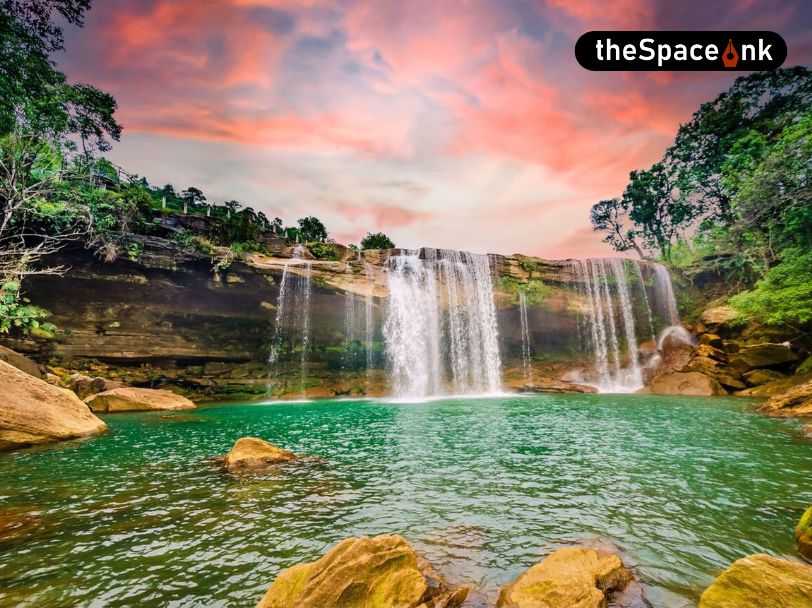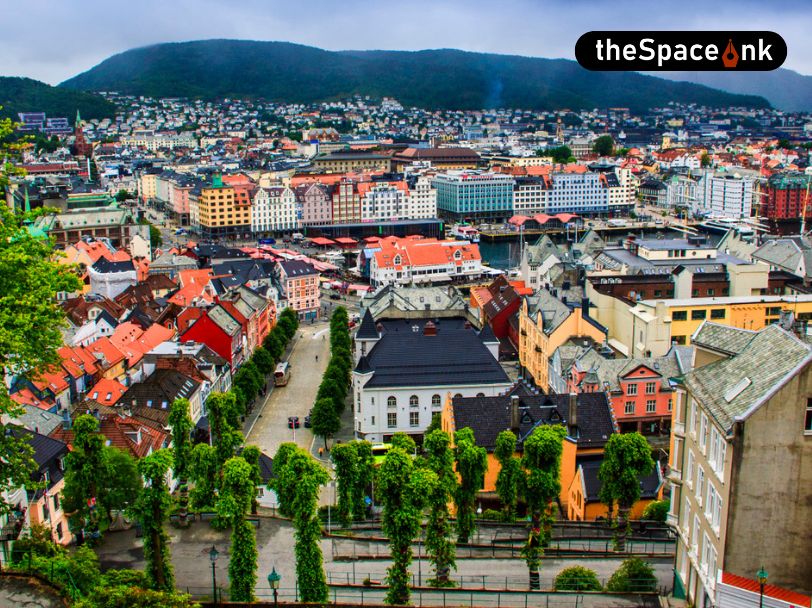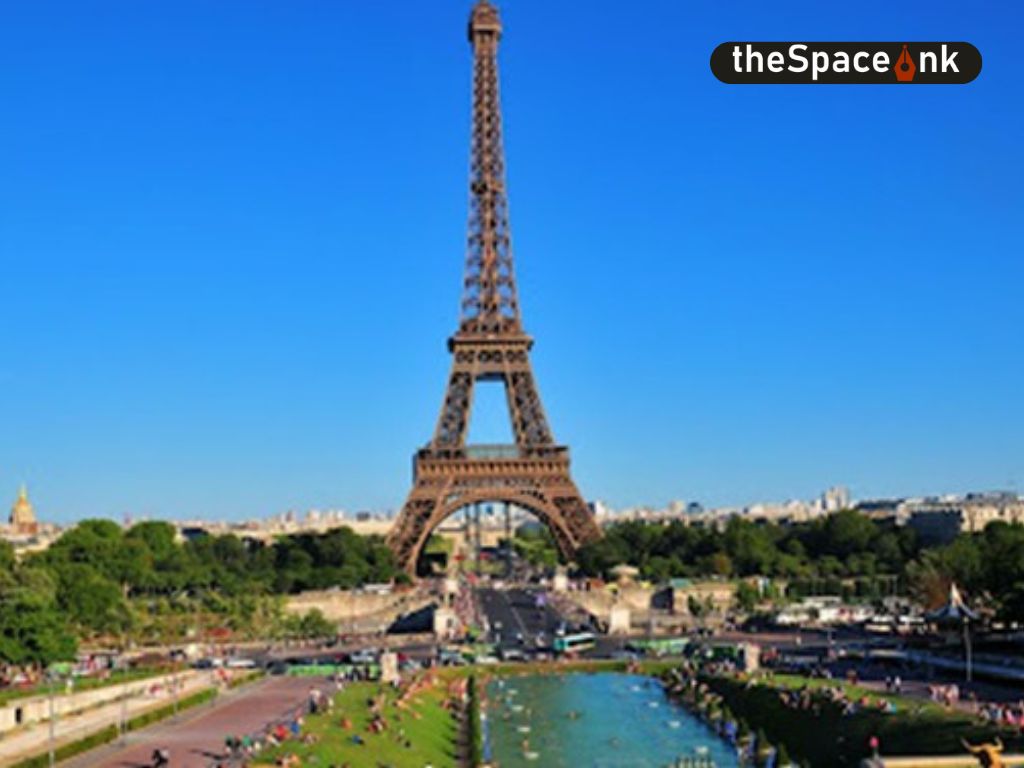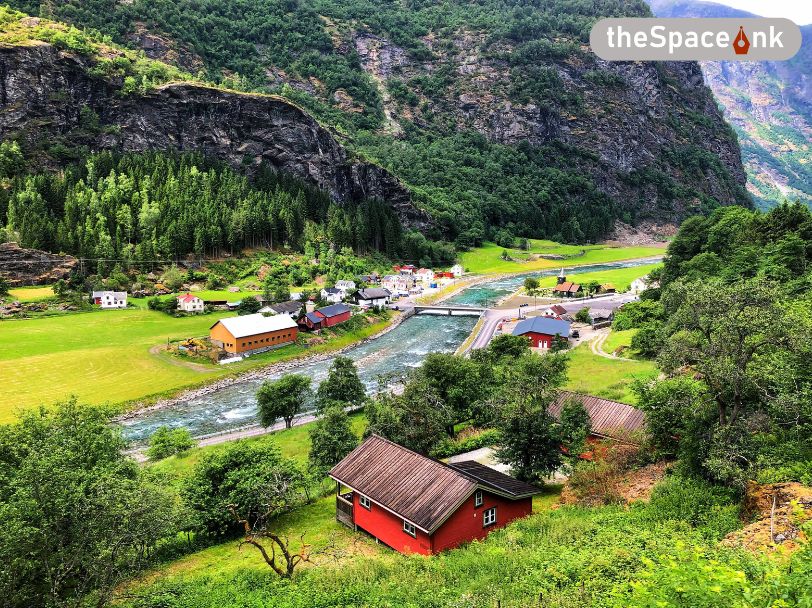I had read about the multi coloured fish swimming in crystal-clear seawater, and saw some images on travel shows too on the television screen. But nothing can quite prepare you for a real-life encounter with the GBR, that is, the Great Barrier Reef in Australia. So when this thriving, living undersea forest of corals invited me, ‘Come, have a look!’ how could I not respond?
It takes about an hour to reach Port Douglas From the city of Cairns in north Queensland. It’s a fishing village which morphed into a pretty little town full of holiday homes, resorts and spas around 1984. You get ships or, ‘boats’ as they call them, to the GBR from Port Douglas’ Marina Mirage Beach. The picturesque road from Port Douglas is skirted by the sea on one side and rainforest hills on the other. The sea journey takes about an hour-and-a-half. I had to pinch myself to be convinced that I was going to GBR after all.
The vessel docked at a pontoon which was the hub of all activities. It’s a massive aluminum structure, almost two storeys high, with the capacity to host about 400 visitors at a time. This was stationed at the Agincourt Reef at the outer edge of the GBR. The area consists of special reefs or ‘ribbons’, running parallel to the Continental shelf, which are recognised for their pristine ecosystem.

The GBR is made up of 3000 separate reefs with nearly 600 islands and stretches some 2300 km across. According to experts, there are at least 1500 species of fish, 400 types of coral and 4000 varieties of mollusks here.
There were various optional activities on offer, besides the regular ones, like snorkeling adventure tour with a marine biologist, scuba diving for first timers, and so on. If you forget to pack a swimsuit, not to worry, you could rent a lycra bodysuit.
Despite my rather delicate relationship with water, I signed up for the Ocean-Walk Helmet Tour. This is basically a walk down to a platform underwater wearing a helmet. Before that you have to fill up an extensive health-related questionnaire, sign an indemnity bond and attend a safety demo!
So there I was, feeling very brave, wearing a wetsuit over my lycra suit and boots, while the pockets of my jacket were weighed down with stones (so that water pressure wouldn’t unsettle the walkers). Looking at a mirror I found myself looking like an astronaut with a transparent shield and huge helmet.
There were six people in my group. I was traveling solo and was the last one in the queue. But standing on the step from where I was to walk down, I saw a helmet in front of me disappear into the water and thereby dripping down all my bravado and I was ready to scoot. But the guides were very persuasive and hand-held me to help take the steps down.
Once I reached the platform, it was fun. Different varieties of fish in colourful scales came swimming to us, knock-knocked on our helmet shields and ate food thrown to them by the instructors. We were encouraged to hold sea urchins in our hands and even feed the fish. Later I heard that the walk is regarded as tougher than snorkelling and I silently congratulated myself for attempting it. We even got certificates of completion after the walk.
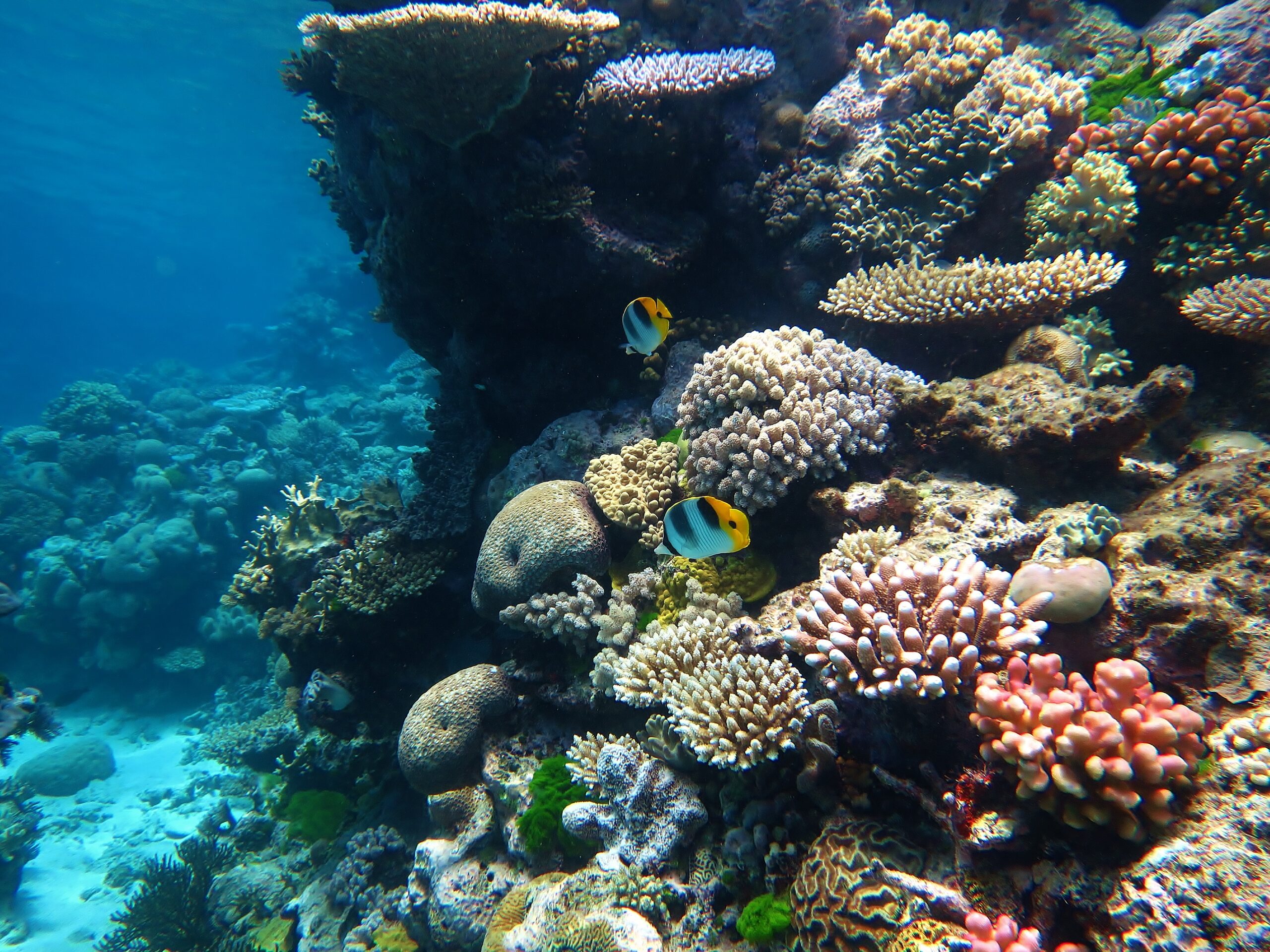
Next on the agenda was a ride in a semi-submersible— a special marine vessel with glass windows. It can hold around thirty people at a time and there was one leaving every 15 minutes. As the pilot made his way through canyons and crevices in the coral forest, their myriad colours fought for attention as they competed with the colourful schools of fish swimming in and out. A huge turtle went by while a giant fish peered at us; further below was a reef shark. It was a breathtaking underwater landscape indeed and met my every expectation.
What a pity that this wonderful world of corals is another natural phenomena facing the onslaught of human callousness. Due to the effect of climate change and global warming and the subsequent change in ocean temperatures, coral bleaching has been happening which makes them die. Illegal fishing and rampant coastal activities also contribute to it. The good thing is with care and preservation efforts corals recover their food producing capability to sustain marine life. Some such efforts by the government have already shown results but the sustained life of the GBR is still a concern to environmentalists.
Rainforest tour
The wet rainforest in North Queensland is a World Heritage site. This is where two UNESCO sites converge: the Daintree Rainforest and the Great Barrier Reef. Next day I joined a group going for the Kuku Yalanji Dreamtime Walk through part of the Daintree Rainforest starting at Mossman Gorge. It is one of the oldest rainforests in the world with a history of approximately 135 million years. There are plants here you cannot find anywhere else in the world.
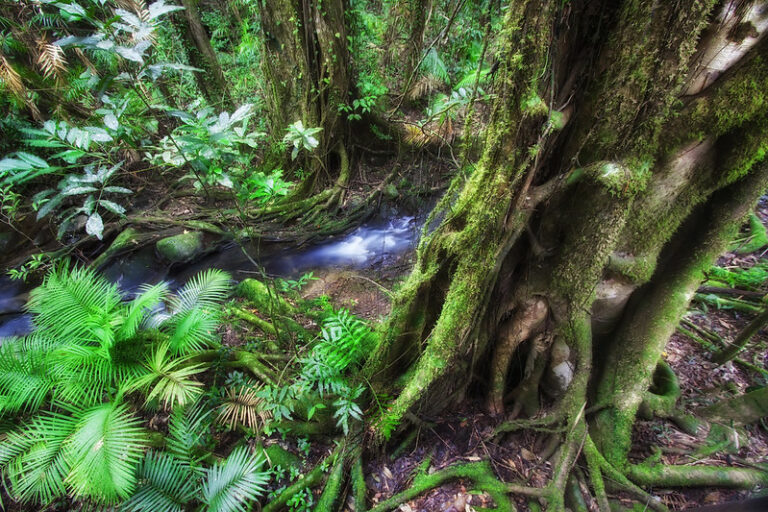
The Kuku Yalanji people are the Indigenous inhabitants of this region. They have been living in the area between the Annan River in the north and Port Douglas in the south for many centuries. For the record, their roots go back to – hold on, 50,000 years or more.
We were going to be introduced to the wonder of the forest by a guide from the Kuku Yalanji Aboriginal clan. At Mossman Gorge, our guide Robert was waiting. Leading us into the rainforest he recounted stories from Ngadiku (Nar-di-gul), the clan’s word for ancient stories and legends. Also referred to as ‘Dreamtime tales’, these can be roughly described as oral folk-history related to the creation of the world.
Before setting foot on the trail, Robert demonstrated a traditional ‘smoking’ ceremony by lighting up a fire with stone chips to ward off bad spirits before entering the rainforest. Perhaps these ethnic rituals are universal in nature and can be observed in many parts of the world, including for example the Sundarbans, abode of the Royal Bengal tiger, where honey-gatherers and crab-catchers pray to the deity called Bon Bibi, before entering the forest.
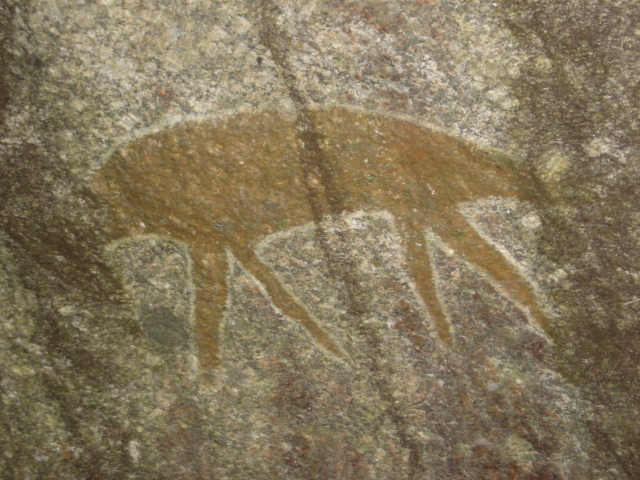
Robert told us that the Indigenous people have been using plants for every purpose – from extracting oil to healing medicines for centuries. Pointing to a leafy candlenut tree over a thousand years old, he informed that its nuts are used for extracting oil and also to start a fire. Early European settlers would make a string of the nuts and set them alight to use as candles. Aboriginal women also ate the seeds to regulate menstruation.
Then there is the Blue Fruit tree (Quandong) which bears nuts that are consumed while the glue from the bark is used for trapping birds. The tree’s wood is used for making canoes, boomerangs and shields. Another beautiful tree with red berries is called the ‘Lipstick’ tree!
Coming across a stream, Robert explained it was a ‘sacred’ place for women. In olden times they would come here when in labour to give birth and also for healing. Strange, how old practices find modern takers. Many obstetricians these days recommend waterbirth in a tub as it is believed to be less stressful for the mother.
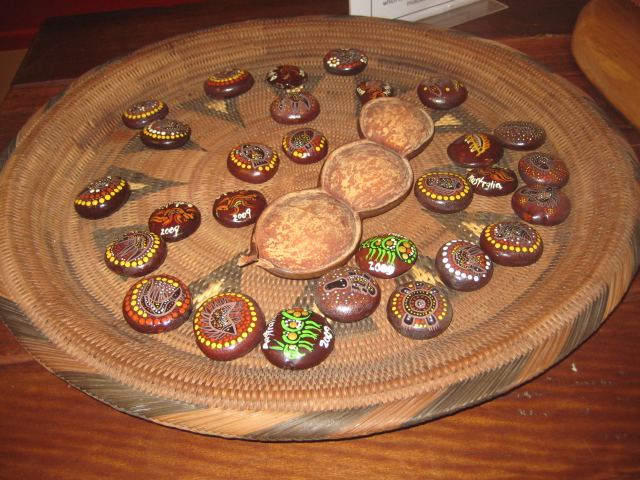
In the tribe women usually did the fishing while men went animal hunting. Constant bending down often caused headaches. So the women used a plant with the sobriquet (when translated) ‘Lady head-bender’ for getting relief. They knew how to extract juice from ‘soap trees’ too to clean themselves.
The people were experts on how to ‘detoxify’ with certain plant foods like the seeds of Cycad Palm growing abundantly here which are highly carcinogenic when raw. After shelling, crushing, leaching in running water for up to five days they cooked and made them into small loaves. These could stay fresh for weeks. With the arrival of ready-made breads this art may have all but disappeared but it shows how traditional knowledge helped the people to survive on what nature provides.
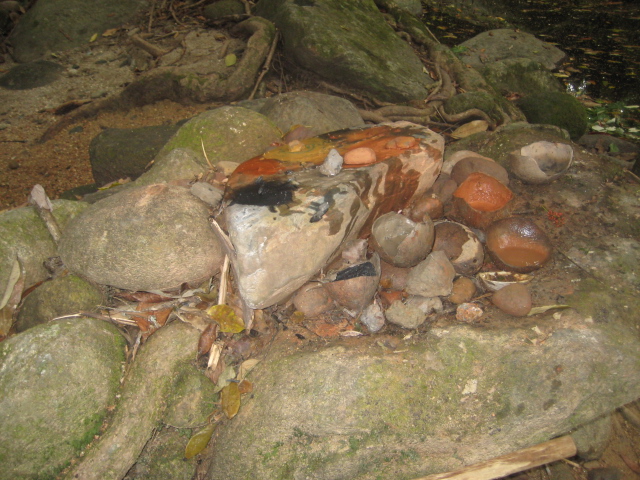
Robert also pointed out rock art on the trail. These were spots where older men of the community waited during the initiation ceremony of young men. They were sent deep into the forest for a few days to explore and survive; after returning they could be certified as proper adults. Paint was made from stones to tattoo the skins. Each colour was symbolic. Red indicated war while white was used to make borders. And as for communication, three horizontal lines one after another means, father-mother-son. Tiny rounds of paint side by side meant raindrops, and so on.
Listening to Robert, it seemed as if we had entered an ancient world. So, when we emerged from the trail to enjoy traditional bush tea and ‘damper’ (a traditional Bush bread), it took some time for the surrounding urbanity to register.
At the nearby Mossman Gorge Centre, there is an Aboriginal Art Gallery where colourful Aboriginal artefacts are on display and sale too.
Images courtesy: Ranjita Biswas, Wikipedia & Flickr
Ranjita Biswas is an independent journalist, author and translator. She is an award winning translator of fiction and has seven published works to her credit so far. She won KATHA awards thrice. Among her translated works, “Written in Tears” (Harper Collins) won the Best Translation Prize in English from Sahitya Akademi in 2017. “The Loneliness of Hira Barua” (Pan Macmillan) won the PFC-Valley of Words award in 2021. “Dawn” (Kali for Women/Zubaan), the first book she translated of Arupa Patangia Kalita, the author of these books, was also translated into Hindi. “Areca Nut Tree and Other Stories” (Vitasta, 2022) is a selection of contemporary short stories by the new age Assamese women writers. Biswas is also an award winning writer of children’s fiction.





